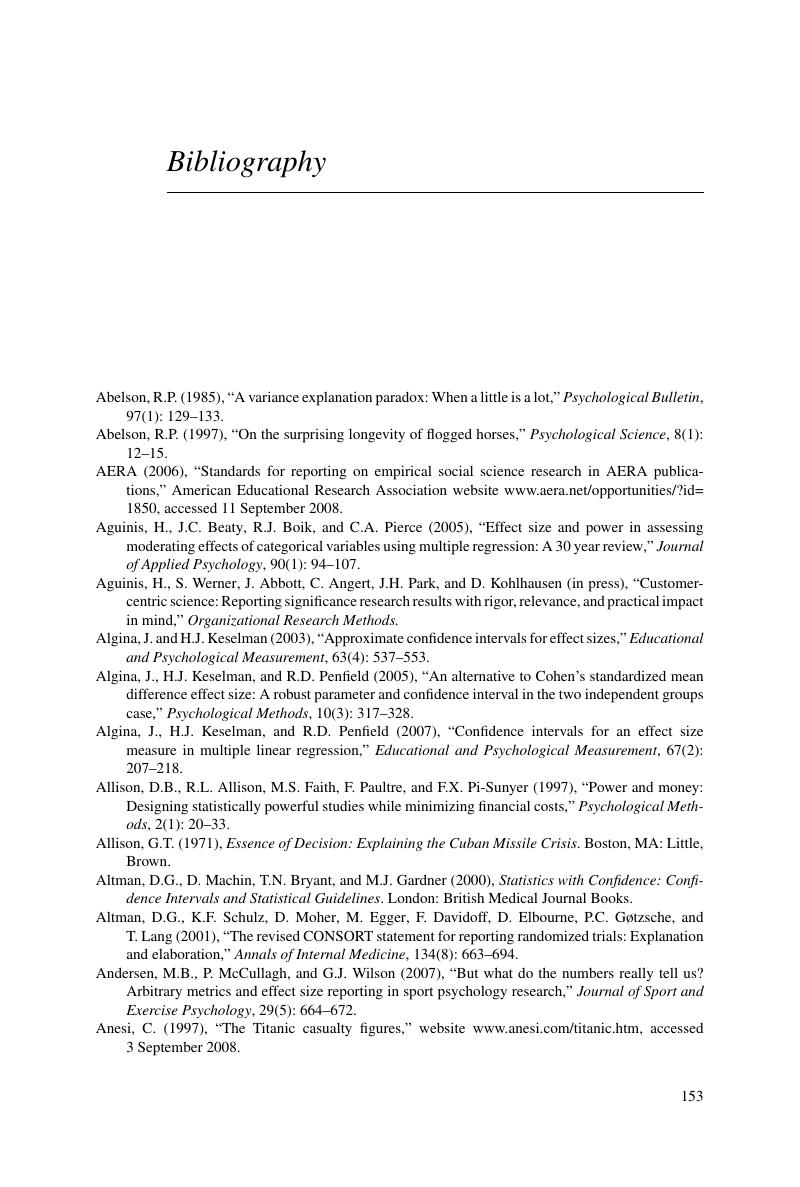 The Essential Guide to Effect Sizes
The Essential Guide to Effect Sizes Bibliography
Published online by Cambridge University Press: 05 June 2012
Summary

- Type
- Chapter
- Information
- The Essential Guide to Effect SizesStatistical Power, Meta-Analysis, and the Interpretation of Research Results, pp. 153 - 169Publisher: Cambridge University PressPrint publication year: 2010
